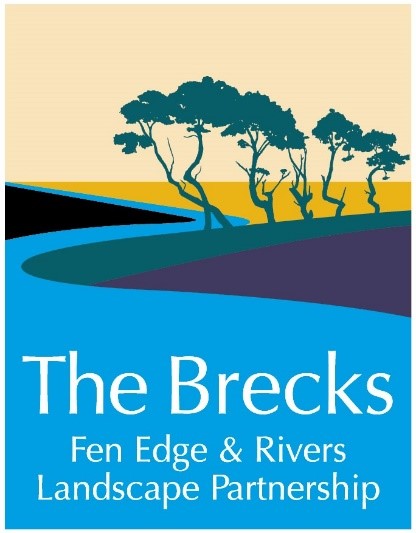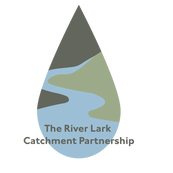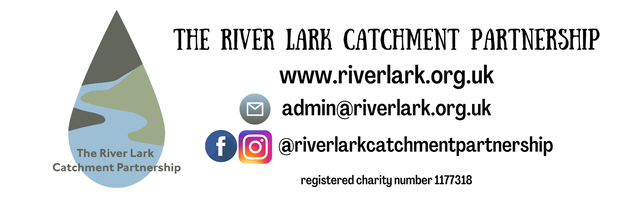
The Brecks is a surprisingly large area in the heart of East Anglia with a unique landscape characterised by heathlands, sandy soils, pine lines and forest plantations. Not only does this make the area look and feel different to other parts of Norfolk and Suffolk, it has meant that the way humans have lived and worked in the landscape throughout history has been very different.
A “Breck”, is a traditional local term for land on the margins of permanent agricultural land and surrounding heaths fluctuating between cultivation and reversion to heathland, depending on need, opportunity, and fertility. This temporary cultivation was a response to the area’s unique geology, soil, and climate.
The Brecks is one of the driest parts of Britain, a landscape of coniferous forest, grass heath and agricultural land, home to many unique or rare birds, plants, and animals. The effects of the last Ice Age can be seen nowhere else as extensively as the Brecks, where pingos were created and the permafrost conditions made distinctive and still-visible ground patterns.
It’s national significance for biodiversity was recently set out in the Brecks Biodiversity Audit, and other documents including the Brecks Landscape character Assessment and the Brecks Special Qualities report (http://www.breakingnewground.org.uk/what-is-bng-2/)
Its human history stretches beyond the Ice Age to some of the earliest evidence for humans in Britain. Neolithic flint miners here formed one of the first industrial landscapes in Britain. The earthworks of medieval rabbit farming and enclosure features of the 19th century landed estates have left their mark too, making this a landscape rich in historical and ecological interest.
The Brecks Fen Edge & Rivers Landscape Partnership
BFER will focus on the Brecks’ fenland fringe, key freshwater habitats and primary river corridors that provided the conduit for biodiversity and early settlement of a hostile landscape. These areas are often overlooked in a landscape that is famous for being sandy and dry, yet they are the driving force behind the area’s unique biodiversity, and history of human settlement.
The Freshwater Habitats Trust rates the Brecks as one of Britain’s top three landscapes for freshwater wildlife, being equivalent in importance to the New Forest and the Broads. Its freshwater interests include biodiverse chalk streams, networks of ancient Pingo ponds (formed by periglacial ice lenses creating depressions that filled with water as the ice melted), and fluctuating meres (aquifer fed fluctuating water bodies).
Man’s influence through development and agriculture has been, and continues to be, more consequential than in most of the rest of the UK. With the anticipated closure of military sites and tens of thousands of new houses expected to be built in the area over the next decade, recreational pressures increasing and massive changes in land use, all freshwater sites in the Brecks are now, and will continue to be, seriously impacted by water quality and quantity.
The story of water is fundamental to how the landscape was settled, from earliest times, Iceni tribes, to Roman, Anglo-Saxon, and Viking to medieval ages. As a result, the landscape boasts internationally significant heritage sites including Grimes Graves, Roman fen edge settlements and early Anglo-Saxon villages such as West Stow.
The built and natural heritage in the Brecks Fenland fringe landscape both result from, and are extremely vulnerable to, changes in the quality and quantity of one resource; Water. Historic and modern impacts on this resource create a unique opportunity to tell this story and engage with communities on a wide range of relevant issues.
The main aims and objectives are:
· Understand, reveal, celebrate the Brecks’ Fen Edge & Rivers.
· Raise awareness of water resource issues & diffuse pollution.
· Restore Rivers and sensitive freshwater habitats.
Working in partnership with organisations including the Freshwater Habitats Trust, Norfolk Rivers Trust, Environment Agency and volunteers, ‘citizen science’ projects will survey important water bodies for quality and quantity, mapping where water is most impacted.
Hearts and minds projects will engage with schools, landowners and communities in key areas of ‘hard to engage’ audiences to highlight the value and sensitivity of water resources in the area, creating a legacy of awareness and conservation.
Natural England, EA, RSPB, Norfolk and Suffolk Wildlife Trusts and other partners including the River Lark Catchment Partnership will work together and with volunteers to deliver priority improvements to the most sensitive sites and create networks of high quality habitats. Many opportunities to carry out restoration and improvement projects to riverside habitats, and in-channel features are identified in local catchment and biodiversity action plans, including work on migration routes for native trout and eels, riparian planting schemes, and restoration of lost (ghost) Pingos
A “Breck”, is a traditional local term for land on the margins of permanent agricultural land and surrounding heaths fluctuating between cultivation and reversion to heathland, depending on need, opportunity, and fertility. This temporary cultivation was a response to the area’s unique geology, soil, and climate.
The Brecks is one of the driest parts of Britain, a landscape of coniferous forest, grass heath and agricultural land, home to many unique or rare birds, plants, and animals. The effects of the last Ice Age can be seen nowhere else as extensively as the Brecks, where pingos were created and the permafrost conditions made distinctive and still-visible ground patterns.
It’s national significance for biodiversity was recently set out in the Brecks Biodiversity Audit, and other documents including the Brecks Landscape character Assessment and the Brecks Special Qualities report (http://www.breakingnewground.org.uk/what-is-bng-2/)
Its human history stretches beyond the Ice Age to some of the earliest evidence for humans in Britain. Neolithic flint miners here formed one of the first industrial landscapes in Britain. The earthworks of medieval rabbit farming and enclosure features of the 19th century landed estates have left their mark too, making this a landscape rich in historical and ecological interest.
The Brecks Fen Edge & Rivers Landscape Partnership
BFER will focus on the Brecks’ fenland fringe, key freshwater habitats and primary river corridors that provided the conduit for biodiversity and early settlement of a hostile landscape. These areas are often overlooked in a landscape that is famous for being sandy and dry, yet they are the driving force behind the area’s unique biodiversity, and history of human settlement.
The Freshwater Habitats Trust rates the Brecks as one of Britain’s top three landscapes for freshwater wildlife, being equivalent in importance to the New Forest and the Broads. Its freshwater interests include biodiverse chalk streams, networks of ancient Pingo ponds (formed by periglacial ice lenses creating depressions that filled with water as the ice melted), and fluctuating meres (aquifer fed fluctuating water bodies).
Man’s influence through development and agriculture has been, and continues to be, more consequential than in most of the rest of the UK. With the anticipated closure of military sites and tens of thousands of new houses expected to be built in the area over the next decade, recreational pressures increasing and massive changes in land use, all freshwater sites in the Brecks are now, and will continue to be, seriously impacted by water quality and quantity.
The story of water is fundamental to how the landscape was settled, from earliest times, Iceni tribes, to Roman, Anglo-Saxon, and Viking to medieval ages. As a result, the landscape boasts internationally significant heritage sites including Grimes Graves, Roman fen edge settlements and early Anglo-Saxon villages such as West Stow.
The built and natural heritage in the Brecks Fenland fringe landscape both result from, and are extremely vulnerable to, changes in the quality and quantity of one resource; Water. Historic and modern impacts on this resource create a unique opportunity to tell this story and engage with communities on a wide range of relevant issues.
The main aims and objectives are:
· Understand, reveal, celebrate the Brecks’ Fen Edge & Rivers.
· Raise awareness of water resource issues & diffuse pollution.
· Restore Rivers and sensitive freshwater habitats.
Working in partnership with organisations including the Freshwater Habitats Trust, Norfolk Rivers Trust, Environment Agency and volunteers, ‘citizen science’ projects will survey important water bodies for quality and quantity, mapping where water is most impacted.
Hearts and minds projects will engage with schools, landowners and communities in key areas of ‘hard to engage’ audiences to highlight the value and sensitivity of water resources in the area, creating a legacy of awareness and conservation.
Natural England, EA, RSPB, Norfolk and Suffolk Wildlife Trusts and other partners including the River Lark Catchment Partnership will work together and with volunteers to deliver priority improvements to the most sensitive sites and create networks of high quality habitats. Many opportunities to carry out restoration and improvement projects to riverside habitats, and in-channel features are identified in local catchment and biodiversity action plans, including work on migration routes for native trout and eels, riparian planting schemes, and restoration of lost (ghost) Pingos
In partnership with communities the scheme will explore the historic Brecks ‘edge’ of the vast fenlands to the west and celebrate the historic linkages between human settlement and water, contributing to the area’s sense of identity. Projects will support discovery and conservation of ‘at-risk’ archaeological features through small-scale excavations, and museum partners will deliver exciting exhibitions exploring the landscape heritage and history of archaeological discoveries.
Working with partners, heritage groups, young people and others projects will provide opportunities for training, work experience and ‘having a go’ to help preserve relevant local crafts and ancient building skills.
In addition, digital and physical access and engagement opportunities will create a legacy of better access to the landscape heritage and environmentally sensitive areas for schools and communities.
Working with local access forums and Natural England, missing footpath links will be addressed to create new access, with market town gateways, limited mobility access, signage and interpretation.
These projects will also create new engagement opportunities between conservation organisations, areas of deprivation in a least 5 local towns, and the health and well-being community, including Suffolk’s ‘Being Well in the Wild’ initiative.
More information can be found here:
www.brecks.org/BFER/
BFER-Landscape-Conservation-Action-Plan
Working with partners, heritage groups, young people and others projects will provide opportunities for training, work experience and ‘having a go’ to help preserve relevant local crafts and ancient building skills.
In addition, digital and physical access and engagement opportunities will create a legacy of better access to the landscape heritage and environmentally sensitive areas for schools and communities.
Working with local access forums and Natural England, missing footpath links will be addressed to create new access, with market town gateways, limited mobility access, signage and interpretation.
These projects will also create new engagement opportunities between conservation organisations, areas of deprivation in a least 5 local towns, and the health and well-being community, including Suffolk’s ‘Being Well in the Wild’ initiative.
More information can be found here:
www.brecks.org/BFER/
BFER-Landscape-Conservation-Action-Plan

